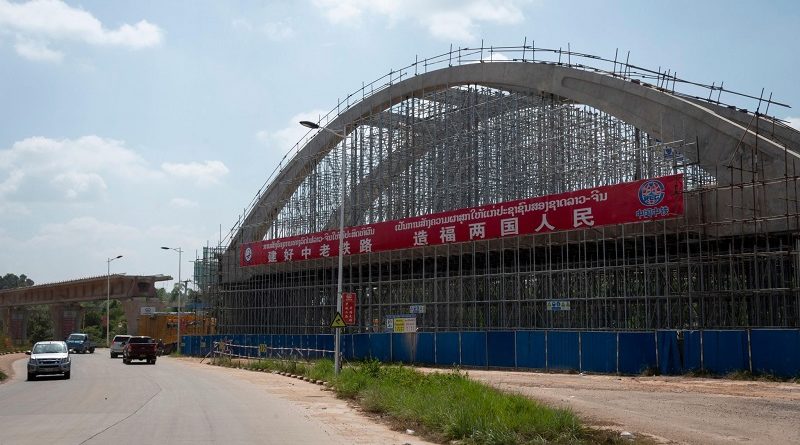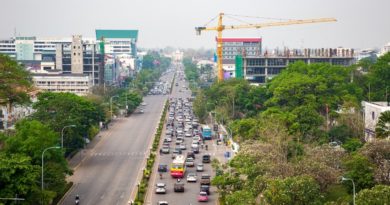China And Russia Position Themselves For Laos’ Fast-Approaching Post-LDC Era
Source: EAF
Despite closed international borders and rolling lockdowns due to the ongoing COVID-19 pandemic in 2021, the Lao People’s Democratic Republic moved closer to its dreams of developmentalist modernity.
A new five-year domestic political cycle was initiated, and international cooperation with old and new friends accompanied key development breakthroughs for Laos.
2021 kicked off with the selection of a new Central Committee at the 11th Party Congress of the Lao People’s Revolutionary Party in January, followed by February elections for the National Assembly and Provincial Peoples’ Assemblies, and the announcement of a new government line-up in March. The members of these respective bodies are tasked with progressing Laos’ development in the coming years.

We are Your Marketing Partners in Laos
The elections saw a high turnover of members within the National Assembly and Provincial Peoples’ Assemblies, with an increase in younger and more educated members. There was a notable reduction in female members, down from 27.5 per cent in 2016 to 21.95 per cent in 2021, below the global average. The post-revolutionary generation of technocrats within the Central Committee and the government continued their gradual shuffle to the top, with a noticeable number of the upwardly mobile bearing the surnames of those who made their mark in the revolution.
The one-party state will chart the next phase of Laos’ socio-economic development in uncertain times. The 9th National Socio-Economic Development Plan for 2021–2025, launched by the government in November, emphasised sustainable, green and inclusive economic growth with a nod to modernisation. Smart cities (toua-meuang thanh-samay), connectivity and eco-friendly industry are all on the development agenda. The challenge, as always, will be to secure sufficient funding to implement the plan.
A bright spot for 2021 was the United Nations notification in September that Laos will be eligible to graduate from Least Developed Country status (LDC) in 2026. While aid from traditional donors like Japan, the EU, Germany, France and Australia is expected to wane as a result in coming years, Vientiane is likely to rely on communist and former communist partners to pick up the slack: political and economic relations with Vietnam remain strong, for example, and China is consolidating its aid to and influence in the country. At the same time, sound economic relations with Thailand continued to supply Laos with consumer goods, while ASEAN lurked in the background as an expensive talkfest — exerting little influence on developments within Laos.
Russia too has re-joined the fray, providing valuable hints that some members of the Lao elite are reluctant to concentrate their trust in China and are instead keen to diversify their patronage networks. The second round of joint Lao–Russian military exercises took place in the Russian Far East in August and teams from the Lao People’s Army also took part in the International Army Games held in Russia during the same month. For the first time in decades, Russia contributed funds to several United Nations development projects in Laos, and Russian university scholarships for Lao students continued to outnumber those offered by most other nations.
While Russian influence does not rival that of China, nor is it ever likely to do so, it indicates that Laos has turned to Russia, not the West, in regulating the growing influence of China. Smoothing Russia’s way are the Russian speakers educated in the former Soviet Union, many of whom now occupy key positions within Laos’ political leadership.
Laos’ newest symbol of modernity, the US$5.9 billion high-speed Lao–China rail link opened in December, connects the land-locked nation to a global power for the first time. In its first month of operation, the railway has attracted curious locals keen to experience train travel. There has been much, mainly external, debate about the project’s debt burden, with the real cost-benefit analysis yet to be seen. China is also said to be considering extending the Vientiane–Vang Vieng expressway, which opened in 2020, all the way to the Lao–China border.
COVID-19 provided an additional platform for international influence in the form of humanitarian vaccine assistance last year. Laos dodged major infection numbers in 2020, but from the second quarter of 2021, positive cases soared from about 50 at the end of March to 111,060 by December. Authorities jailed scapegoats for allegedly spreading the virus, leaving a mark on Laos’ otherwise impressive response to the pandemic. Deaths from COVID-19 totalled 372 between May–December 2021.
The well-organised vaccination campaign continues to use a mix of vaccines donated from China, Russia and the multi-donor COVID-19 Vaccine Global Access Facility (COVAX Facility). The Sinopharm vaccine has been distributed to approximately 50 per cent of the vaccinated Lao population, a much higher percentage than the Russian-manufactured Sputnik V. However, Laos has reportedly taken the unusual step of agreeing to purchase additional Sputnik doses rather than rely totally on donations, another demonstration of Moscow’s growing pull in the country.
It seems Laos’ well-honed diplomatic skills will continue to be required, to dance with the changing cast of old and new suitors as it travels along its accelerating path to LDC graduation and modernity.
Kathryn Sweet is a social development consultant, policy advisor and independent scholar of Laos, based in Canberra, Australia.





